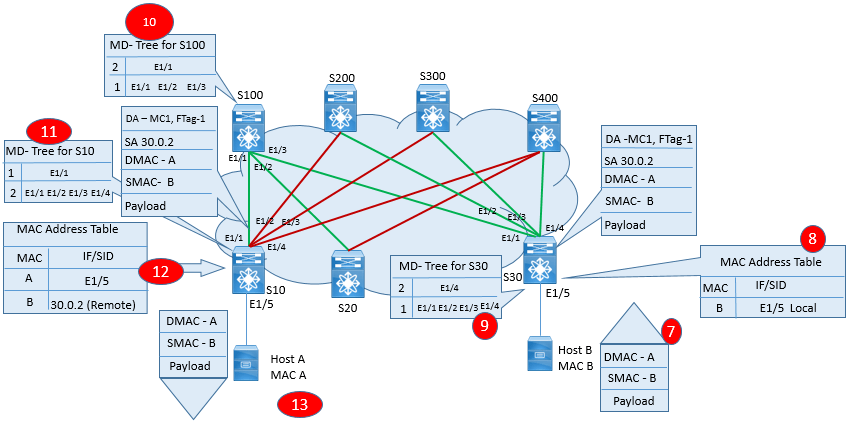

This IP address is, in turn, mapped to a multicast group across the network. If a vSwitch receives a packet destined for an unknown address, the vSwitch will forward the packet to an IP address that floods the packet to all the other vSwitches. VXLAN control plane is very similar to the spanning tree control plane. If you are a cloud provider you will soon reach the 4000k VLAN limit. The Layer 2 VLAN segment is used to transfer non-routable heartbeats or state information that cant cross an 元 boundary. Typically an application segment would have multiple segments, between each segment you will have firewalling and load balancing services and each segment requires a different VLAN.

BIDIRECTIONAL MAC ADDRESS LEARNING DRIVER
While VXLAN does provide Layer 2 adjacency between these logical endpoints with the ability to move VMs across boundaries, the main driver for its insertion was to overcome the challenge of having only 4000 VLAN.

VXLAN scales the 12-bit to a 24-bit identifier and allows for 16 million logical endpoints, with each endpoint potentially offering another 4000 VLANs. The 12-bit VLAN identifier in traditional VLANs capped scalability within the data center and proved to be cumbersome if you wanted a VLAN per application segment model. VXLAN employs a MAC over IP/UDP overlay scheme and extends the traditional VLAN boundary of 4000 VLANs.
BIDIRECTIONAL MAC ADDRESS LEARNING SOFTWARE
This is done via software or hardware VXLAN to VLAN gateway.ģ) HA Clusters across failure domains/availability zones.Ĥ) VXLAN works well over fabrics that have equidistant endpoints.ĥ) VXLAN-encapsulated VLAN traffic across availability zones MUST be rate-limited to prevent broadcast storm propagation across multiple availability zones. After the ToR tables become full, Layer 2 traffic will be treated as unknown unicast traffic which will be flooded across the network causing instability to a previously stable core.ġ) Multi-tenant IaaS Clouds where you need a large number of segments.Ģ) Link Virtual to Physical Servers. This pushes the limits on the table sizes for the ToR switch. A solution was needed that could leverage the ECMP capabilities of an IP network while also offering the capability of extended VLANs across an IP core i.e virtual segments across the network core.Ģ) Multi-tenancy: Layer 2 networks are capped at 4000 VLANs restricting multi-tenancy design.ģ) ToR table scalability: Every ToR switch may need to support a number of virtual servers and each virtual server requires a number of NICs and MAC addresses. 1) STP issues and scalability constraints: STP is undesirable on a large scale and lacks a proper load balancing mechanism.


 0 kommentar(er)
0 kommentar(er)
